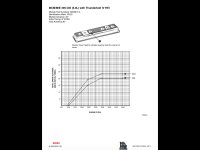Walleye4Days
Contributing Member
Looking for the spark plug gap, and trying to better understand spark plus in general, because I've gotten recommendations from .025 all the way to .050! That seems like a HUGE gap in knowledge amongst thre dozen or so people I talked to.
So, I have an AQ225D engine, but no longer have the old points distributor/coil. I have:
- Pertronix Flamethrower High Voltage HEI (marine)
- 8mm United Delphi plug wires (but upgrading to better quality 8mm wires)
- AC Delco CR43TS
I am at a loss as to what would be the correct gap for this setup. Stock VP manual suggests .028 on Bosch HR8A plugs, but that's with both the old style distributor and decades old parts that didn't have the new tech and info we've discovered and obtained since then.
So, what exactly is it that determines the correct spark plug gap, and what would be the correct gap for my setup? (Sorry for any confusion, I just am not grasping the full understanding of ignition to gap relation).
So, I have an AQ225D engine, but no longer have the old points distributor/coil. I have:
- Pertronix Flamethrower High Voltage HEI (marine)
- 8mm United Delphi plug wires (but upgrading to better quality 8mm wires)
- AC Delco CR43TS
I am at a loss as to what would be the correct gap for this setup. Stock VP manual suggests .028 on Bosch HR8A plugs, but that's with both the old style distributor and decades old parts that didn't have the new tech and info we've discovered and obtained since then.
So, what exactly is it that determines the correct spark plug gap, and what would be the correct gap for my setup? (Sorry for any confusion, I just am not grasping the full understanding of ignition to gap relation).


